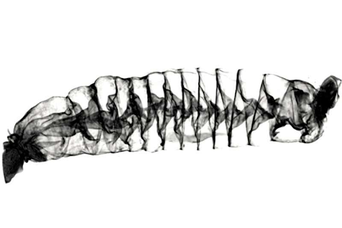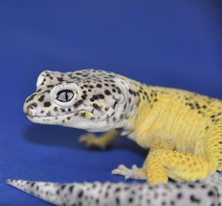"These five recent scientific discoveries may not be talked about much but they could be the step to huge new findings" -- Jif Dillemuth, 9th grade
Before ground-breaking findings and inventions can be made, smaller ones have to lead the way. These five recent scientific discoveries may not be talked about much but they could be the step to huge new findings.
1. The Biohybrid Fish
1. The Biohybrid Fish
Before making an artificial human heart, the first step is to figure out how the human heart works. Emory and Harvard University researchers have made a biohybrid fish with human stem cells. Biohybrids are a mix of living and non-living materials. The objective is to learn more about human cardiac cells by copying the behavior of the heart. With a cardiac cell layer on either side the biohybrid fish retracts on one side while the other stretches to make a swim-like movement almost attempting to simulate a beat of the heart.
2. Titanium Heart
2. Titanium Heart
Unlike the biohybrid fish’s replication of the mechanics of a heart, this technology delivers blood to the body and lungs using a spinning disc,called BiVACOR. It can also adapt with its patient like starting to pump faster when exercising. The heart can be made out of titanium because of its minimal parts. It may be more reliable and closer to the function of a human heart than other artificial hearts. BiVACOR gives hope to the future of heart implants.
3. Images from the James Webb Telescope
3. Images from the James Webb Telescope
The infrared space observatory that is the James Webb Space Telescope (JWST) which launched December 25, 2021, has sent back its first pictures from space after a long process of hundreds of positioning its mirrors. The telescope has plans to study the birth of stars, assembly of galaxies, and even the first light in the universe. The first pictures may just look like a bunch of white dots but it is a big development to fully set up the telescope for observations.
With each mirror taking a different picture it’s image shows a single star in a formation of different angles. Its pictures continue to increase in quality as it sends more back. Within the next few months while the telescope is adjusting, it will focus on narrowing every dot down into just one star. The JWST, NASA’s (National Aeronautics and Space Administration) strongest and biggest space telescope may lead to many new discoveries about the past and present of the universe.
4. New Discovery in Shark Intestines
4. New Discovery in Shark Intestines
Shark intestines work differently from any others in the known animal kingdom. Instead of relying on muscle movement to send food through, sharks have spiral-like funnels to dispose of the meal while scraping out all of the calories. This method might be more efficient and save power. Researchers have recently discovered that its functionality is similar to the Tesla valve, maybe even more effective. The Tesla valve made by Nikola Tesla was designed to move substances in a single direction while not using any moving parts. The study and mimicry of shark organ systems could help improve current wastewater filtration systems. Functions like pollution removal and filtering microplastics could benefit by using this structure.
5. Gene Found in Geckos
5. Gene Found in Geckos
Tiny white tumors were noticed on the unusually colored offspring of two rare lemon frost geckos. Iridophores, a crystal structured cell that reflects light to make pigment, is where the skin cancer arises in about 80% of lemon frost geckos. When researched, it was discovered that the geckos contained a gene called SPINT1, which is the cause for the cancer and connected to skin cancer in humans. The gene can cause errors leading to the stepping up of iridophores producing bright coloring and the tumors. With more research, gene scientists hope to better understand how cancers can start in humans which could lead to new treatments.
Though some might not seem so big, these five discoveries might be stepping stones for future innovations.
Though some might not seem so big, these five discoveries might be stepping stones for future innovations.







